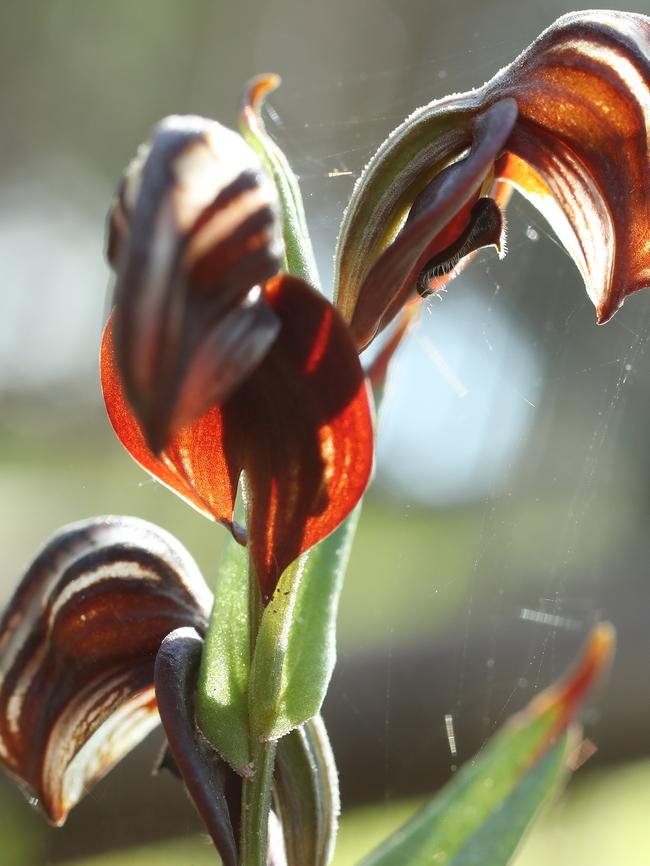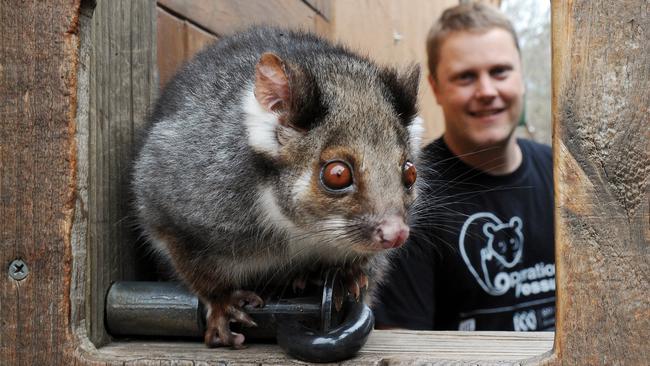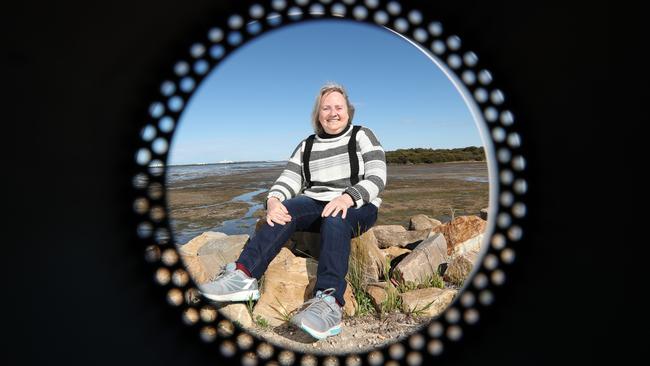Citizen science projects Wild Orchid Watch and Mozzie Monitors use people power for good
Boomers are exploring their interests while advancing scientific knowledge in citizen science projects with extra benefits for mental health and wellbeing.
A roadside rendezvous with two natural beauties sparked an obsession with orchids that has now inspired a national scientific project.
Husband and wife team, Robert and Rosalie Lawrence of Brooklyn Park, fell in love with wild orchids 15 years ago.
They had been taken to a roadside reserve near Nhill, near the Victoria-SA border.
“We saw some sun orchids and donkey orchids, which we hadn’t seen before,” Mr Lawrence says. “When we got back to Adelaide we found the Native Orchid Society of South Australia, so we made contact with them and started going on field trips.”
In 2011 they published Start with the Leaves, a guide to the orchids and lilies of the Adelaide Hills, and South Australia’s Native Orchids, a publication on DVD.
Then Mrs Rosalie discovered the “Go Botany” website of the US National Science Foundation and began a quest to create an Australian orchid identification website.
Wild Orchid Watch is now taking shape at the University of Adelaide, with funding from the federal Inspiring Australia Science Engagement Program.
The “WOW” app and database is being developed and orchid enthusiasts are being recruited for beta testing and supplying photographs.
In 2020 the app will be publicly released and the data available for research, policy and planning purposes.
“It’s not like we’ve done something brilliant,” Mr Lawrence says.

“All we’ve done is we’ve put together what most people who are interested in orchids want to happen anyway, which is a systematic or easy way for people to collect data and get it all in one place.”
WOW project officer at the University, Dr Katie Irvine, also runs the state chapter of the Australian Citizen Science Association, a member-based community organisation that was conceived at a national conference in 2014.
“Citizen science provides an avenue for people to get involved in meaningful scientific research and share their skills and knowledge,” says Dr Irvine.
“It fosters greater scientific and technological literacy, and is growing in momentum in Australia. Citizen science projects are a lot of fun.”
The Association’s Australian Citizen Science Project Finder shows more than 150 projects are active in South Australia.
They include national and international projects on all sorts of topics, from astronomy to zoology and everything in between.
SA chapter committee member and founder of the Discovery Circle at UniSA, Dr Phil Roetman, says there’s a project for everyone, so it’s a matter of matchmaking.
Consider your interests, skills and time available and then find a project to suit.
And Boomers, or anyone over the age of 50, are an incredibly valuable resource.
“In my experience, a lot of citizen scientists are part of that older generation, because they have time and they have skills that they want to contribute,” Dr Roetman says.
And he should know, having run many successful projects over more than a decade at UniSA.

It all began with Operation Bluetongue in 2007. Then came Operation Possum (2008), Operation Magpie (2009), and Operation Spider (2010).
The four projects fed into Dr Roetman’s PhD thesis, published in 2013: The “citizen” in citizen science: The research, education and engagement of a program based on local wildlife species in South Australia.
But he didn’t stop there and went on to lead the Great Koala Count and Cat Tracker, the corella management project and BioBlitz events.
The data collected has helped in understanding the distribution of species, the home-ranges of domestic cats, the management of abundant species and the locations of threatened species.
On Friday night at the SA Science Excellence Awards, he was named 2019 Unsung Hero of Science Communication.
“It’s nice to be recognised, for all this work that I’ve done in trying to connect people and science over the years,” Dr Roetman says.
“I really do love working with the community, helping people to connect with nature and also creating pathways where they can make really valuable contributions to research and monitoring of the natural environment. That’s what I love doing.”
Last year he left UniSA to become the environment and sustainability officer with the City of Burnside.
There he leads the Burnside Urban Foresters whose focus is on trees and the wildlife they support.
Just before he left UniSA, he joined with the Office for Ageing Well on the Activating Citizen Scientists project, promoting science and research among older members of the community.
The target audience was encouraged to participate in hands-on citizen science activities through a series of guided excursions in natural, age-friendly locations, and participants were able to learn about the diversity of frogs, mozzies, birds and bugs.
Acting director of the Office for Ageing Well, Cassie Mason says citizen science projects provide opportunities for older South Australians to engage with each other, their local community and their environment, through contributing to research, connecting with experts, and sharing their findings.
“This project enables older members of the community to participate in science activities relevant to their interests and expertise, while gaining new skills, connecting with like-minded people and learning new things along the way.”
UniSA Associate Professor Craig Williams completed the project after Dr Roetman left.
A review of the published literature shows getting involved in citizen science is beneficial for mental health.
“It’s good for people’s minds, good for their sense of self and wellbeing,” he says.
His pet project is Mozzie Monitors, where an army of volunteers is set to work trapping mosquitoes in their backyards in order to better identify disease risks in SA.

Dedicated Mozzie Monitor Linda Millison of St Kilda says citizen science is great fun and you learn a lot along the way.
“You just might catch one or two that are vectors for disease, that was the thing that interested me,” she says.
“It wasn’t just collecting something like butterflies for the shape or the colour of their wings, there was actually a scientific reason behind it.
“The fact that we could have mozzies in the area that are vectors for zika virus, or this one or that one, I thought, that’s really worthwhile.”
How to become involved
● Visit the website of the Australian Citizen Science Association to search for projects that interest you: citizenscience.org.au
● Sign up to receive the newsletter by email at eepurl.com/gl0BK9
● Join the SA Chapter
● Go along to one of the events in your local area:
– Microbat, Mozzie and Movie Event, August 18 at the Murray Bridge Town Hall, 2pm-4.30pm.
– Wild Orchid Watch Field Trip, September 7 at Morialta Conservation Park,
10am-1pm.
– Burnside Urban Foresters October 17 at the Burnside Civic Centre, 6pm-7.15pm.

